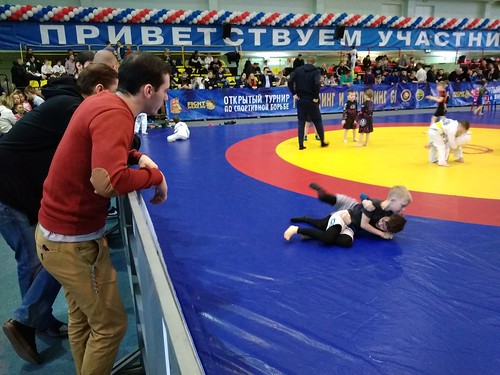Her subcellular phenomena (like cell compartments whichFrontiers in Plant Science De Vos et al.VPTissue for Modular Plant Development SimulationFIGURE Screenshot of tissue editor window using the attribute panel and geometric panel to the proper. The Node, Edge, and Cell mode choice buttons are on the leading left of the window. These buttons  enable typespecific operations like node movement, edge insertion, cell creation, and so on. (information can be identified inside the user manual).can have an effect on hormone availability; e.g Band et al) can’t be described however with Virtual Plant Tissue. In contrast to OpenAlea which can supply a so known as visual programming environment (VPE), model implementation in Virtual Plant Tissue needs C programming abilities. Of course, no threedimensional tissue representations might be accomplished. At this point parallelisation of your simulator will not be available as an choice however, but that is envisaged for the subsequent release.FUNDINGThis work was supported by a concerted study TRAP-6 biological activity activity grant (GOA) “A Systems Biology Approach of Leaf Morphogenesis” with the University of Antwerp. DDV was supported by the Belgian Science Policy Workplace by a MARS Inter University Attraction Poles project (IAP). SS was supported by an IWT grant. All authors produced substantial contributions for the conception, design or MedChemExpress 3-Methylquercetin analysis of the perform. All authors contributed to drafting and revising the perform, final approval on the version to become published, and are accountable for all elements in the work, making certain that inquiries associated to the accuracy or integrity of any element on the perform are appropriately investigated and resolved. We thank Roeland Merks for fruitful s concerning this operate.SUPPLEMENTARY MATERIALThe Supplementary Material for this article can be located on the net athttp:journal.frontiersin.orgarticle.fpls fullsupplementarymaterialFrontiers in Plant Science De Vos et al.VPTissue for Modular Plant Growth Simulation
enable typespecific operations like node movement, edge insertion, cell creation, and so on. (information can be identified inside the user manual).can have an effect on hormone availability; e.g Band et al) can’t be described however with Virtual Plant Tissue. In contrast to OpenAlea which can supply a so known as visual programming environment (VPE), model implementation in Virtual Plant Tissue needs C programming abilities. Of course, no threedimensional tissue representations might be accomplished. At this point parallelisation of your simulator will not be available as an choice however, but that is envisaged for the subsequent release.FUNDINGThis work was supported by a concerted study TRAP-6 biological activity activity grant (GOA) “A Systems Biology Approach of Leaf Morphogenesis” with the University of Antwerp. DDV was supported by the Belgian Science Policy Workplace by a MARS Inter University Attraction Poles project (IAP). SS was supported by an IWT grant. All authors produced substantial contributions for the conception, design or MedChemExpress 3-Methylquercetin analysis of the perform. All authors contributed to drafting and revising the perform, final approval on the version to become published, and are accountable for all elements in the work, making certain that inquiries associated to the accuracy or integrity of any element on the perform are appropriately investigated and resolved. We thank Roeland Merks for fruitful s concerning this operate.SUPPLEMENTARY MATERIALThe Supplementary Material for this article can be located on the net athttp:journal.frontiersin.orgarticle.fpls fullsupplementarymaterialFrontiers in Plant Science De Vos et al.VPTissue for Modular Plant Growth Simulation
Retail expense for fresh horticultural merchandise reflects capital investment in building appropriate plant stock, in fostering its cultivation, and in solution storage and handling along the meals provide chain. Even though a multifaceted concept drawing on a variety of implicated stakeholders, quality is ultimately what captures the expectations to become met at the retail customer’s finish from the agroindustry spectrum. The perception of top quality is dependent on intrinsic traits of horticultural commodities, shaped by genotypic, cultural and ecophysiological effects, and on extrinsic traits formulated by the socioeconomic and promoting atmosphere (Schreiner et al). Multidisciplinary research have highlighted that top quality is extra significant to consumers than value when the latter varies within the anticipated range (Harker et al). Although consonance of top quality using the expense of purchase influences consumer behavior, top quality is the fact that which largely commands recurring consumers. In regulatory context, the challenge of high quality is addressed chiefly by cropspecific class requirements based on limited important visual and organoleptic characteristics (Commission Implementing Regulation (EU) No ,). Excellent requirements as a result usually define class criteria for minimum acceptability and deliver sensible, powerful, largely nondestructive indicates for standardization procedures. They fail, even so, to address complex compositional elements of high-quality pertaining to flavor, specifically the volatile aroma fraction, or PubMed ID:https://www.ncbi.nlm.nih.gov/pubmed/17032924 to nutritional and bioactive worth which customers are becoming increasingly conscious of Schreiner et al Plant breeding.Her subcellular phenomena (like cell compartments whichFrontiers in Plant Science De Vos et al.VPTissue for Modular Plant Growth SimulationFIGURE Screenshot of tissue editor window with the attribute panel and geometric panel towards the suitable. The Node, Edge, and Cell mode selection buttons are on the leading left in the window. These buttons allow typespecific operations like node movement, edge insertion, cell creation, and so forth. (particulars could be located within the user manual).can impact hormone availability; e.g Band et al) can’t be described however with Virtual Plant Tissue. Unlike OpenAlea which can provide a so called visual programming environment (VPE), model implementation in Virtual Plant Tissue demands C programming expertise. Of course, no threedimensional tissue representations is usually completed. At this point parallelisation with the simulator will not be available as an option yet, but this is envisaged for the following release.FUNDINGThis operate was supported by a concerted analysis activity grant (GOA) “A Systems Biology Method of Leaf Morphogenesis” of the University of Antwerp. DDV was supported by the Belgian Science Policy Office by a MARS Inter University Attraction Poles project (IAP). SS was supported by an IWT grant. All authors produced substantial contributions to the conception, design or analysis in the work. All authors contributed to drafting and revising the function, final approval with the version to become published, and are accountable for all aspects in the perform, ensuring that queries related for the accuracy or integrity of any part on the work are appropriately investigated and resolved. We thank Roeland Merks for fruitful s regarding this work.SUPPLEMENTARY MATERIALThe Supplementary Material for this article can be identified on-line athttp:journal.frontiersin.orgarticle.fpls fullsupplementarymaterialFrontiers in Plant Science De Vos et al.VPTissue for Modular Plant Growth Simulation
Retail price for fresh horticultural items reflects capital investment in building suitable plant stock, in fostering its cultivation, and in item storage and handling along the meals provide chain. Despite the fact that a multifaceted concept drawing on various implicated stakeholders, good quality is eventually what captures the expectations to be met at the retail customer’s finish of your agroindustry spectrum. The perception of excellent is dependent on intrinsic traits of horticultural commodities, shaped by genotypic, cultural and ecophysiological effects, and on extrinsic traits formulated by the socioeconomic and advertising environment (Schreiner et al). Multidisciplinary studies have highlighted that high quality is  much more important to consumers than cost when the latter varies inside the anticipated range (Harker et al). Although consonance of top quality with the cost of purchase influences customer behavior, high quality is the fact that which largely commands recurring shoppers. In regulatory context, the problem of quality is addressed chiefly by cropspecific class requirements based on limited important visual and organoleptic traits (Commission Implementing Regulation (EU) No ,). High quality standards thus tend to define class criteria for minimum acceptability and give sensible, effective, mainly nondestructive suggests for standardization procedures. They fail, even so, to address complicated compositional aspects of good quality pertaining to flavor, especially the volatile aroma fraction, or PubMed ID:https://www.ncbi.nlm.nih.gov/pubmed/17032924 to nutritional and bioactive value which consumers are becoming increasingly conscious of Schreiner et al Plant breeding.
much more important to consumers than cost when the latter varies inside the anticipated range (Harker et al). Although consonance of top quality with the cost of purchase influences customer behavior, high quality is the fact that which largely commands recurring shoppers. In regulatory context, the problem of quality is addressed chiefly by cropspecific class requirements based on limited important visual and organoleptic traits (Commission Implementing Regulation (EU) No ,). High quality standards thus tend to define class criteria for minimum acceptability and give sensible, effective, mainly nondestructive suggests for standardization procedures. They fail, even so, to address complicated compositional aspects of good quality pertaining to flavor, especially the volatile aroma fraction, or PubMed ID:https://www.ncbi.nlm.nih.gov/pubmed/17032924 to nutritional and bioactive value which consumers are becoming increasingly conscious of Schreiner et al Plant breeding.